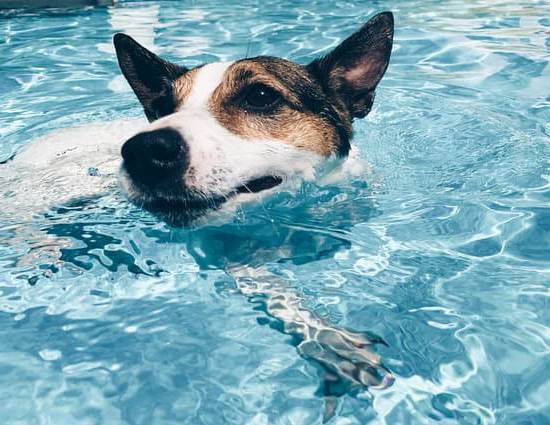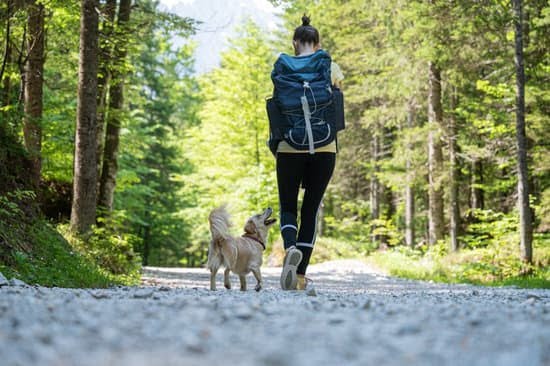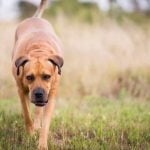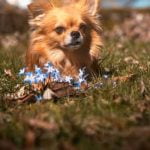Are you interested in learning how to train a dog to bear hunt? Bear hunting with dogs has been a popular sport for many years, and training a dog for this specific purpose requires time, effort, and dedication. In this article, we will guide you through the process of training your dog to be a successful bear hunter.
Before diving into the training process, it’s important to understand the basics of bear hunting as a sport. This involves knowing the different techniques and strategies used in bear hunting, as well as the role that dogs play in this activity. Understanding the fundamentals of bear hunting will not only give you a broader perspective on the sport but also help you grasp the significance of proper dog training in this context.
Once you have a good grasp of bear hunting fundamentals, the next step is finding the right breeds that are best suited for bear hunting. Different breeds have different strengths and weaknesses when it comes to this activity, so it’s crucial to choose a breed that aligns with your hunting preferences and environment. Moreover, proper training preparations like acquiring the necessary equipment, tools, and resources for dog training are essential before delving into actual training sessions.
Finding the Right Breeds
When it comes to bear hunting, the right breed of dog can make all the difference in the success of your hunt. While many breeds can be used for hunting, there are a few that are best suited for bear hunting due to their size, strength, and instincts.
One of the most popular breeds for bear hunting is the Plott Hound. Originating in the United States, these hounds were specifically bred for tracking and hunting big game, making them an excellent choice for bear hunting. Their endurance, determination, and keen sense of smell make them valuable assets in the field.
Another breed that is often used for bear hunting is the Karelian Bear Dog. Hailing from Finland, these fearless and independent dogs are known for their courage and tenacity when facing large game. Their natural instincts make them well-suited for tracking and treeing bears, making them a valuable asset in bear hunting expeditions.
In addition to specific breeds like the Plott Hound and Karelian Bear Dog, other breeds such as Black and Tan Coonhounds and Treeing Walker Coonhounds are also commonly used for bear hunting. These breeds possess traits that make them well-suited for tracking, treeing, and holding bears at bay until hunters arrive.
When considering which breed is best suited for bear hunting, it’s important to take into account factors such as temperament, trainability, physical attributes, and natural instincts. Regardless of the breed you choose, proper training is crucial in preparing your dog for bear hunting expeditions. In the next section we will explore how to train a dog to bear hunt effectively using appropriate techniques and methods.
Training Preparations
When it comes to training a dog for bear hunting, the right equipment, tools, and resources are essential. Here are some items you will need to properly prepare for training your dog:
- Tracking Collar: A reliable tracking collar is crucial for keeping tabs on your dog during training and actual hunting sessions. Look for a collar with long battery life and a strong signal.
- Scent Training Aids: Scent drags, scent wicks, and bear scent can be used to train your dog to recognize and follow the scent of a bear. These aids are essential for building up your dog’s tracking instincts.
- Training Leads: Durable training leads or long lines are necessary for ensuring control over your dog during training exercises. These leads allow you to give commands and guide your dog as needed.
- Protective Gear: Consider purchasing protective vests or collars for your dog to prevent injuries from brush, thorns, or other hazards encountered during hunts.
In addition to essential equipment, having access to the right tools can make a significant difference in preparing your dog for bear hunting:
- Whistle: A whistle can be used as an effective tool for giving commands and signals to your hunting dog over long distances.
- Dummy Bear: Using a dummy bear during training can help simulate real hunting scenarios and familiarize your dog with the feel and smell of a bear. This can build confidence in your dog’s abilities.
- Training Scents: Utilizing training scents that mimic the smell of bears can aid in teaching your dog how to track and locate bears in the wild.
Having access to relevant resources, such as books on bear hunting, online forums for hunting enthusiasts, and professional trainers or mentors who have experience in training dogs specifically for bear hunting, can provide valuable knowledge and support as you embark on this endeavor.
By ensuring that you have the necessary equipment, tools, and resources at your disposal, you’ll be better equipped to train your dog effectively for bear hunting.
Establishing a Foundation
When it comes to training a dog for bear hunting, it’s crucial to establish a strong foundation and bond with your canine companion. Building a solid relationship with your dog is not only important for effective communication and obedience but also for the safety and success of your bear hunting endeavors. Here are some key tips for establishing a strong bond with your dog as you prepare for bear hunting:
- Spending Quality Time Together: One of the most important ways to build a strong bond with your dog is by spending quality time together. Whether it’s through regular walks, playtime, or just relaxing together, the more time you invest in bonding with your dog, the stronger your relationship will become.
- Positive Reinforcement: Using positive reinforcement techniques such as treats, praise, and rewards will help create a positive association between you and your dog. This will not only make training more enjoyable for your dog but also strengthen the bond between you.
In addition to spending quality time together and using positive reinforcement, it’s also important to establish yourself as the leader in the relationship. Dogs are pack animals and thrive in an environment where there is a clear leader. By being consistent with commands, setting rules and boundaries, and providing structure in your dog’s daily routine, you can establish yourself as the leader in a way that is both reassuring and comforting for your dog.
Overall, building a solid foundation and bond with your dog is essential for successful bear hunting. Not only does it create trust and reliability between you and your canine companion, but it also ensures a safe and enjoyable experience for both of you during bear hunting excursions.
Basic Training Techniques
Understanding the Importance of Commands and Signals
When it comes to bear hunting, a crucial factor in a successful hunt is effectively communicating with your dog. This means teaching them specific commands and signals that they can understand and respond to in the field. Commands like “track,” “stop,” “leave it,” and “fetch” are essential for guiding your dog during a bear hunt. Additionally, signals such as hand gestures or whistles can also be used to direct your dog while maintaining silence in the wilderness.
Utilizing Positive Reinforcement
One of the most effective methods for teaching commands and signals to your dog for bear hunting is through positive reinforcement. This means rewarding your dog with treats, praise, or play when they successfully follow a command or respond to a signal. By associating their actions with positive outcomes, dogs are more likely to repeat the behavior, making it an essential part of their training process.
Consistency and Repetition
Consistency is key when training your dog for bear hunting. Using the same commands and signals consistently will help reinforce their understanding of what is expected of them during a hunt. Additionally, repetition is necessary for solidifying the learning process. Regular training sessions that focus on practicing commands and signals will help your dog retain this information and respond effectively in real-life hunting situations.
By understanding how to train a dog to bear hunt through basic training techniques such as teaching commands and signals, you can set the foundation for a successful partnership with your canine companion in the exhilarating sport of bear hunting.
Field Training
When it comes to field training, finding a suitable location is essential. Look for an area with diverse terrain that resembles the environment where you plan to hunt bears. This could include wooded areas, open fields, and water bodies. It’s important to expose your dog to different types of terrain and obstacles to prepare them for the unpredictable nature of bear hunting.
During field training, you can also work on refining your dog’s tracking and scent detection abilities. Introduce them to different scents and tracks so they can learn to identify and follow the scent trail of a bear. Additionally, use this time to reinforce their obedience and responsiveness to commands while navigating challenging terrain.
It’s crucial during field training sessions that safety measures are observed at all times. Make sure that both you and your dog are equipped with the necessary gear, such as protective vests or collars for your dog, as well as appropriate equipment for yourself. Safety should always be a priority when undertaking field training exercises as part of preparing your dog for bear hunting.
| Field Training Tips | Safety Precautions |
|---|---|
| Simulate realistic bear hunting scenarios | Use protective gear for both you and your dog |
| Expose your dog to diverse terrains | Ensure proper obedience and responsiveness |
| Refine tracking and scent detection abilities | Be aware of potential hazards in the environment |
Advanced Training
Refining Scent Tracking
One of the most crucial skills for a bear hunting dog is their ability to track and follow the scent of a bear. Advanced training should focus on refining this skill, allowing the dog to differentiate between different scents and remain focused on the trail under various environmental conditions. Using scented training aids can help to simulate real-life scenarios and improve the dog’s tracking abilities.
Developing Endurance and Stamina
Bear hunting often requires dogs to cover long distances over rough terrain, sometimes for extended periods. It’s important to gradually build up their endurance and stamina through consistent exercise and outdoor activities. This can include hiking, running, and swimming, as well as regular workouts that mimic the physical demands of bear hunting.
Enhancing Obedience and Discipline
As dogs advance in their training, it becomes essential to reinforce obedience and discipline. They must be able to respond quickly and reliably to commands in high-pressure situations. Advanced training should focus on refining these skills, incorporating distractions and different environments to ensure that the dog remains focused and obedient at all times.
In advanced training for bear hunting dogs, it’s vital to continue building on the foundation laid during basic training while introducing more challenging exercises that replicate real-life hunting scenarios. With dedication, patience, and consistency, dogs can be trained effectively for successful bear hunting expeditions.
Safety and Responsibility
In conclusion, training a dog to bear hunt is a challenging but rewarding endeavor that requires dedication, patience, and the right techniques. It’s important to understand the basics of bear hunting and choose the appropriate breed for this sport. Additionally, having the right equipment, tools, and resources will set you up for success in your training preparations.
Establishing a strong bond with your dog is crucial for effective bear hunting training. This foundation will help your dog trust and follow your commands as you teach them the necessary signals and techniques for bear hunting. Field training in a controlled environment will allow you to simulate real bear hunting scenarios and prepare your dog for the challenges they will face.
As you progress to advanced training, it’s essential to fine-tune your dog’s skills and instincts to ensure successful bear hunting. However, safety and responsibility should always be at the forefront of your mind. Keeping your dog safe and considering ethical considerations in bear hunting are integral parts of this sport. Ultimately, by following these steps and putting in the time and effort, you can effectively train a dog to bear hunt.
Frequently Asked Questions
What Dog Is Trained to Hunt Bears?
The Karelian Bear Dog is trained to hunt bears. This breed originated in Finland and has a strong prey drive, fearlessness, and protective instincts which make them suitable for bear hunting.
How Do You Bear Hunt With a Dog?
Bear hunting with a dog typically involves using scent hounds or specially trained dogs to track and locate the bear. Once the bear is located, the hunter can then approach for a clean shot. It’s important to follow local laws and regulations when bear hunting with a dog.
How Do I Train My Dog to Be a Hunting Dog?
Training a dog to be a hunting dog involves patience, consistency, and proper guidance. Start with basic obedience training and gradually introduce them to scent work, retrieval, and field training. Providing positive reinforcement and plenty of exercise are also key factors in developing a successful hunting dog.

Welcome to the blog! I am a professional dog trainer and have been working with dogs for many years. In this blog, I will be discussing various topics related to dog training, including tips, tricks, and advice. I hope you find this information helpful and informative. Thanks for reading!





